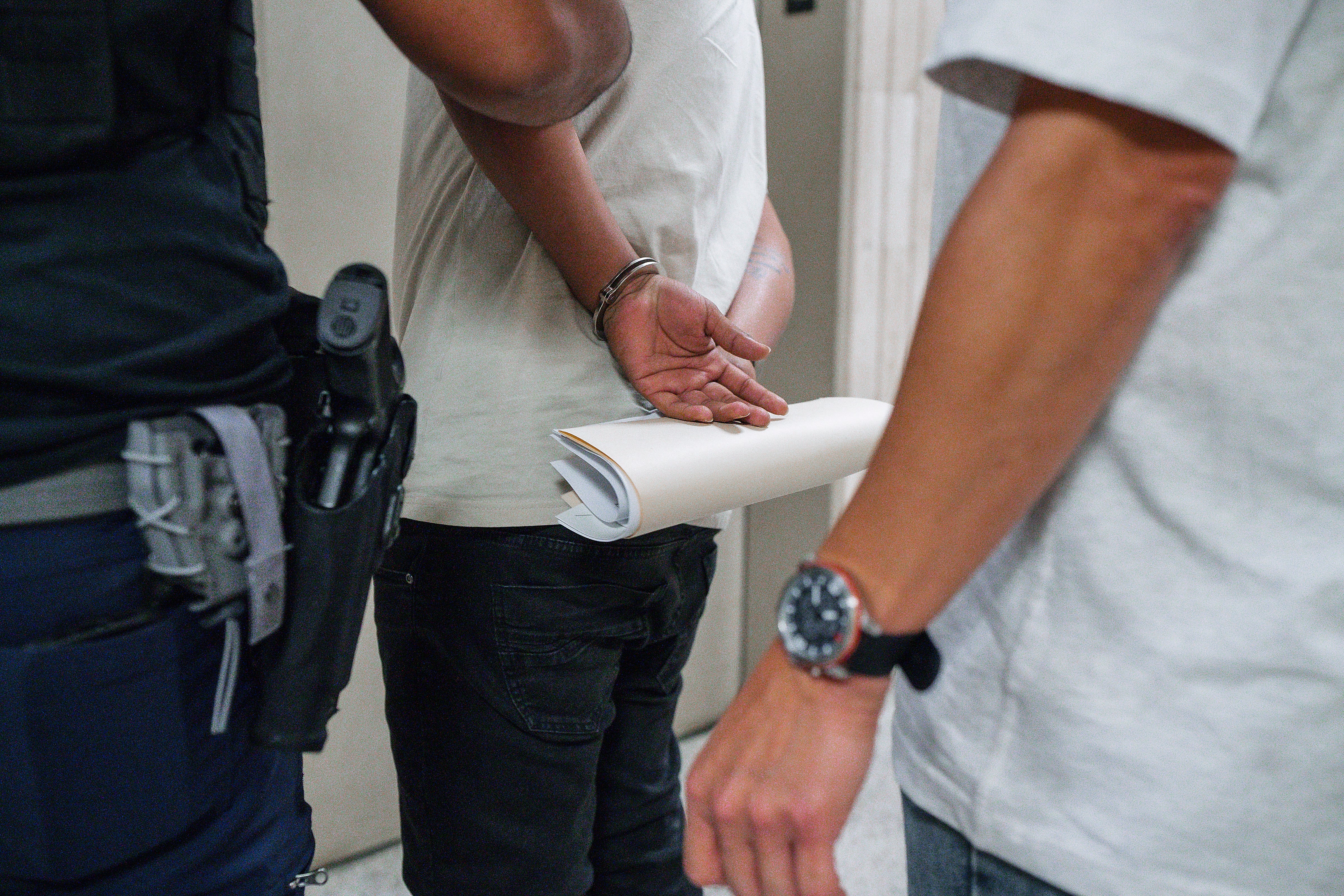One of the great themes of international rivalry in the early part of the 20th century was the race to the poles, the competition between nations to see whose flag would first fly at the North and later the South Pole.
As the last great uncharted areas of the globe, the poles had a particular fascination for ordinary citizens as well as for scientists and statesmen. After Robert E. Peary won the footrace to the North Pole in 1909 (at least in the eyes of the American public, although his accomplishment is still subject to considerable dispute even today), the next great competition was to see who could be the first to fly over the pole.
The American people found aviation every bit as fascinating as exploration, and by the mid-1920s all kinds of exciting new achievements in flying were being reported.
In 1925 an unusual first of sorts took place as two nations tried to reach the North Pole by air.
Norway’s all-out effort was made by a team composed of the first explorer to reach the South Pole, Roald Amundsen, and a rich young American adventurer, Lincoln Ellsworth.
The attempt by the United States was on the hidden agenda of a relatively unknown naval aviator who was eager to try such a flight during an expedition on which he had teamed up with a well-known Arctic explorer who wanted no part of an attempt to reach the pole.
Americans would soon read all about this curious airborne expedition that their country had sent to the Far North. Through regular newspaper coverage they learned much about the activities of the venture, which was known officially as the MacMillan Arctic Expedition, named for Donald B. MacMillan, the veteran explorer who was leading it.
In the fall of 1925 several articles in National Geographic magazine described the work of the enterprise.
One of these articles, written by the expedition’s senior naval officer, introduced the public to the man who would go on to become perhaps the most famous aviator-explorer of his era: Richard E. Byrd, then a lieutenant commander in the U.S. Navy.
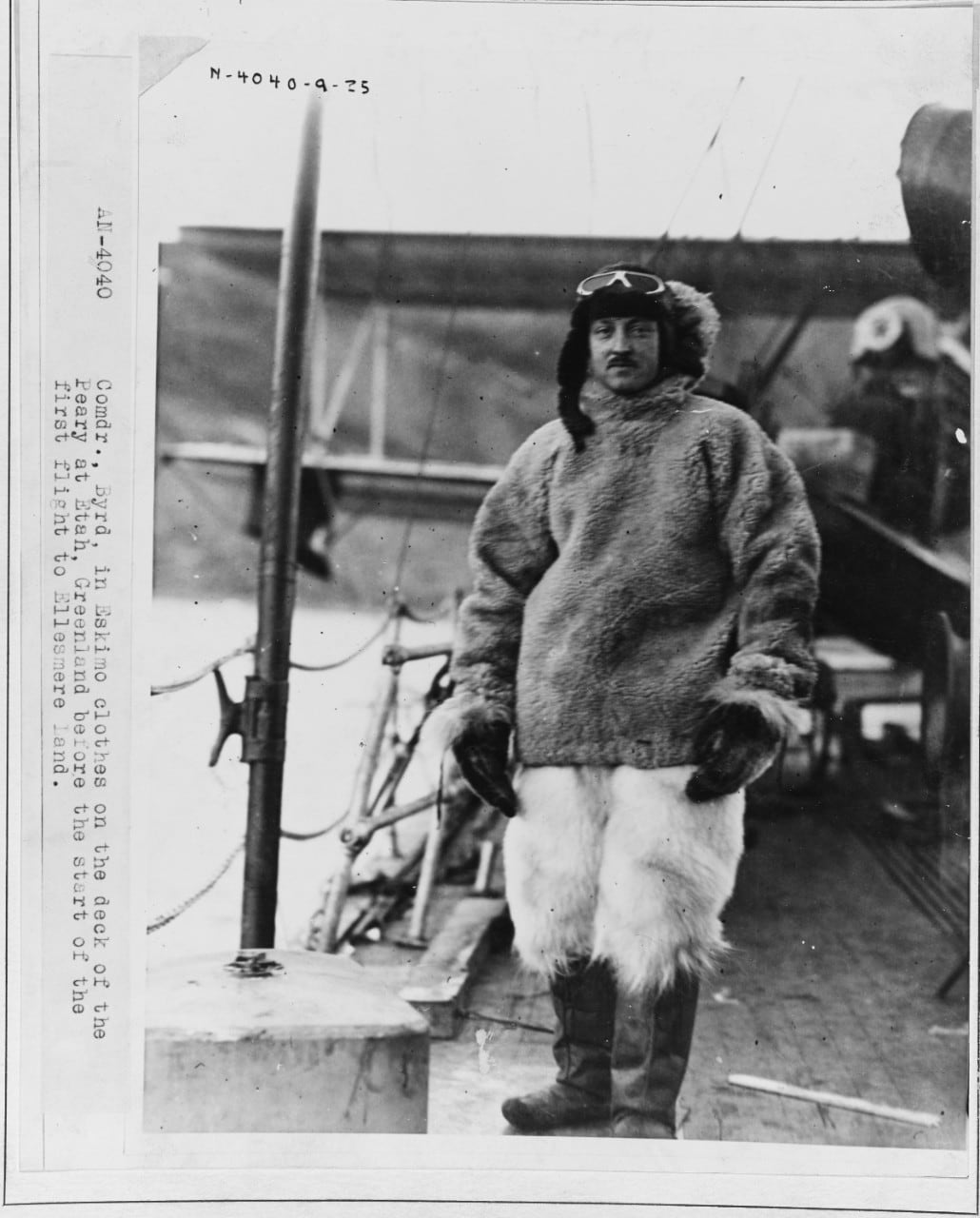
The 1925 expedition was significant in several respects. It marked the first productive use of aircraft in Arctic exploration by Americans, and it thrust Byrd into the limelight as spokesman for the role of aviation in such efforts.
As a joint operation with civilian and military components, it was well publicized and reported, with daily progress reports reaching the American public by radio. It also marked the convergence — or near collision — of the old and the new in Arctic exploration and in the careers of the men involved.
It was only peripherally an attempt to reach the pole, and yet, even with its modest goals, the expedition was no more than a nominal success.
Richard E. Byrd, the scion of an aristocratic and politically influential Virginia family, had graduated from the U.S. Naval Academy in 1912.
Seemingly headed for success in the Navy, he found his career jeopardized by several injuries to his right leg — a fractured ankle while playing football at the academy, another fracture of the same ankle in a gymnastics accident while he was still a midshipman and yet another fracture in a fall on board the battleship Wyoming.
Byrd was given a medical retirement as an ensign in 1916, but he was brought back onto active duty when additional officers were needed during World War I.
With the help of well-placed friends, he obtained the ideal sit-down duty for a man with a limp: He was accepted for pilot training. After winning his wings, Byrd found himself largely in administrative positions in aviation.
He never flew in combat during World War I.
After the war he became the innovator and principal planner for the Navy’s Curtiss NC-4 flight across the Atlantic.
Disappointed that he could not make the flight himself, he nevertheless left his mark through his professional contributions to aerial navigation. These, according to a Navy news release, included not only the Byrd sextant, a bubble sextant he had developed, but also a drift and speed indicator, a course and distance indicator and a zenithal projection of the Atlantic that eliminated the difficult mathematical computations of the past.
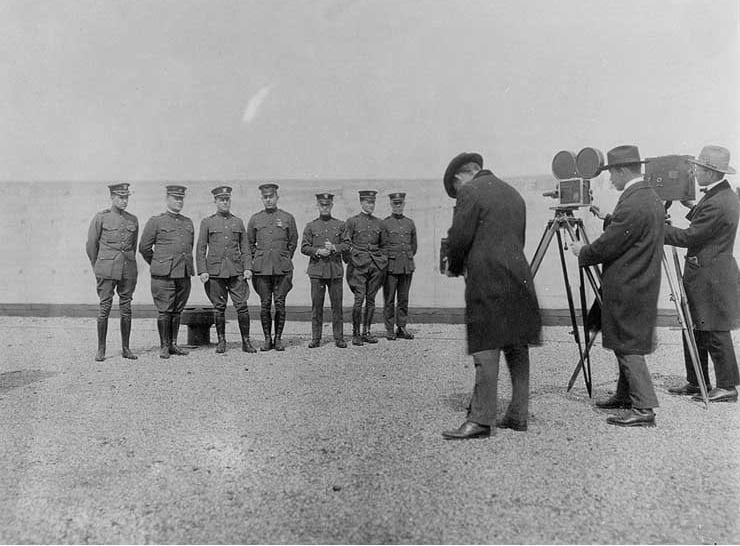
For the next few years Byrd organized Naval Reserve air stations and units around the country. But he continued to think about the Arctic, an area that had fascinated him for many years. Even as a young man he had dreamed of reaching the North Pole, but after Peary had attained that goal, Byrd thought in terms of being the first to fly over the pole.
Byrd saw his chance in 1925, a time of intense activity in aviation as well as competition among the military services.
In 1920 an Army plane had hopped from New York to Nome, Alaska, with frequent stops. In 1924 the Army made a spectacular flight around the world with considerable help from, but little recognition to, the Navy.
Early in 1925 the Navy was forced to scrub a projected Arctic flight of the dirigible Shenandoah when the airship was damaged in a storm.
That same year the service was planning a flight of twin-engine seaplanes to Hawaii. It appeared that Amundsen, the distinguished Norwegian explorer, would soon be ready to fly toward the North Pole. The timing seemed right for an Arctic flight with Navy planes.
Teaming up with the veteran Arctic ship captain Robert A. ‘Bob’ Bartlett, who had been with Peary in 1909 and was considered the grand old man of Arctic exploration, Byrd launched a fund-raising effort on behalf of his project.
To obtain the necessary airplanes, he turned to the Navy Department.
Initially he argued that the Far North needed to be explored hydrographically, because military and commercial flights would eventually cross the pole.
As a clincher, he noted that the U.S. Navy needed a striking accomplishment to offset the harsh public criticism it was receiving at the hands of Brig. Gen. William D. ‘Billy’ Mitchell of the Army Air Service, who was campaigning for the supremacy of air power, delivered by a separate air arm, in future military operations.
Eventually Byrd convinced Secretary of the Navy Curtis D. Wilbur of the benefits of the expedition, and Wilbur in turn sold the idea to President Calvin Coolidge.
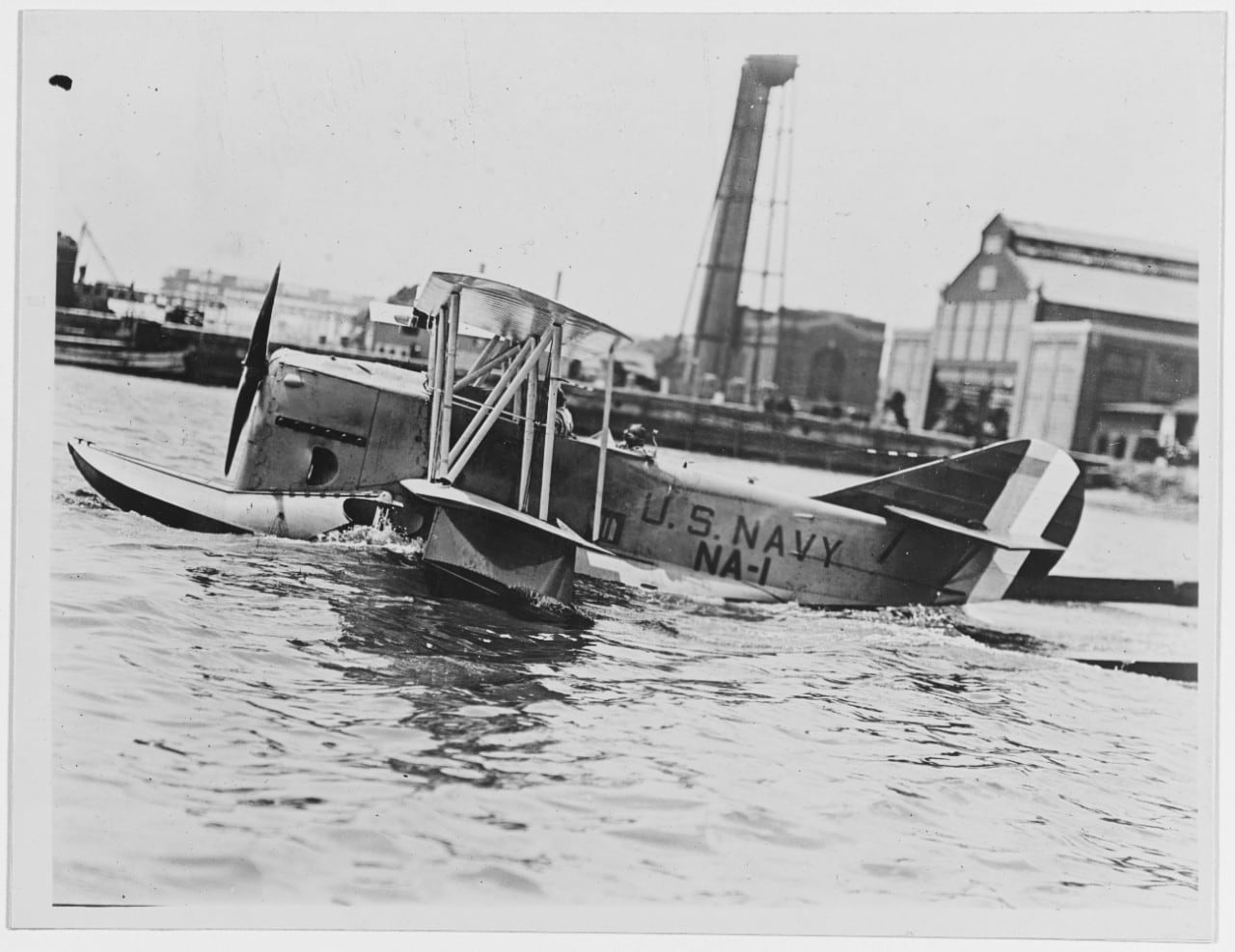
The plane that the Navy furnished was a relatively new amphibian design built by the Loening Aircraft Company. Loening’s planes were unique in that they did not make use of a flying boat hull, as did earlier amphibians, but instead used a large single float faired into the underside of the fuselage.
This two-seater, open-cockpit biplane was manufactured for several years, during which a number of modifications appeared, designated by the Navy as OL-1 through OL-9.
Some were powered by Liberty engines, others by Packards and a later series by Pratt & Whitney air-cooled engines.
The model turned over to Byrd was an OL-2, which had an inverted 400-hp Liberty engine. It had a maximum speed of 122 mph, with an original range of about 500 statute miles — hardly impressive performance characteristics for a plane that was going to engage in exploration.
Ultimately, three of these planes were allocated to the expedition.
The Navy issued an announcement assuring the public that if the expedition encountered any serious difficulties, the Navy would have two dirigibles, Los Angeles and the recently repaired Shenandoah, standing by for a rescue.

Gratified that he had obtained planes and personnel, Byrd moved ahead with his planning. But he discovered that not only was the Norwegian Amundsen preparing for an attempt at the North Pole but also another American Arctic expedition was being planned for the same general time frame.
This effort was being spearheaded by Donald MacMillan, a former college professor and longtime Arctic explorer who had also been with Peary in 1909 and was a lieutenant commander in the Navy Reserve.
MacMillan had already approached the Navy about getting a plane for his expedition after lining up strong sponsorship by the National Geographic Society, with financial support from Chicago millionaire E.F. McDonald, Jr., who headed the Zenith radio manufacturing firm.
McDonald was also a lieutenant commander in the Navy Reserve.
Sensing that his own effort needed broader support and that a joint expedition could achieve more than two individual ones, Byrd approached MacMillan about combining their efforts. The older man reluctantly agreed, insisting, however, that he must be in overall charge of the operation.
Capt. Bartlett was dropped out of the plans at this point.
Knowing that the Navy distrusted outsiders, Byrd managed to have his own orders drawn up so that he was put in command of a naval force that was in a cooperative support relationship with the civilian expedition, rather than a component of it. Nevertheless, that arrangement was fraught with problems.
Throughout the expedition the two polar philosophies of MacMillan and Byrd — dog sled vs. aircraft and scientific research vs. military operations — would remain in conflict.
McDonald, too, complicated the leadership struggle by proclaiming himself the commanding officer of Peary, one of the expedition’s two ships. He also controlled the radio traffic, even on occasion preventing Byrd from sending coded messages to the Navy Department.
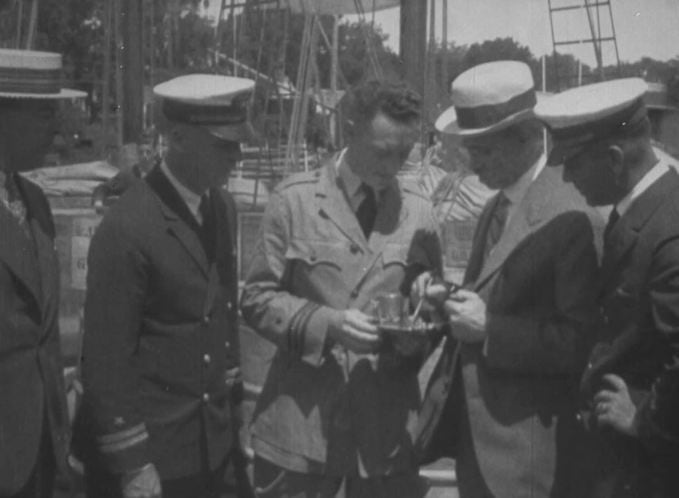
The several purposes of the expedition were announced in advance.
The National Geographic Society scientists would study the natural phenomena of the area, while the Navy planes would survey the great expanse of uncharted ice lying between Alaska and the pole. Among other things, this survey would try to determine whether the lands reported by Peary as ‘Crocker Land’ or by his rival Frederick A. Cook as ‘Bradley Land’ or by MacMillan as the ‘Lost Continent’ actually existed.
Little was said officially about the North Pole, although one of the ‘proposed routes of exploration flights’ shown on a map published at the time of the expedition went close to the pole.
In the meantime, Amundsen and Ellsworth had taken off from Spitzbergen on May 21, 1925, en route to the North Pole, using two Dornier Wal flying boats configured as amphibians. Powered by two Rolls-Royce engines in a tractor-pusher arrangement, the planes had adequate range to make the trip, but they carried only enough gasoline for 200 miles beyond the actual distance to the pole and back, about 1,200 miles.
When they failed to return, a search was launched for the fliers. Byrd and MacMillan agreed that finding the missing explorer and his expedition would become a priority of the American expedition.
As it turned out, the two Wal aircraft of Amundsen and Ellsworth, after getting within 150 miles of the pole, were forced to make emergency landings on the ice. During three weeks of hard work, with their food nearly gone, the six men in the party were able to carve an airstrip out of the hummocked ice and then take off in one overloaded ski-rigged plane in which they returned safely to Spitzbergen.
Byrd was unaware of that development when the American expedition left for the Arctic, but he apparently learned of it en route north.
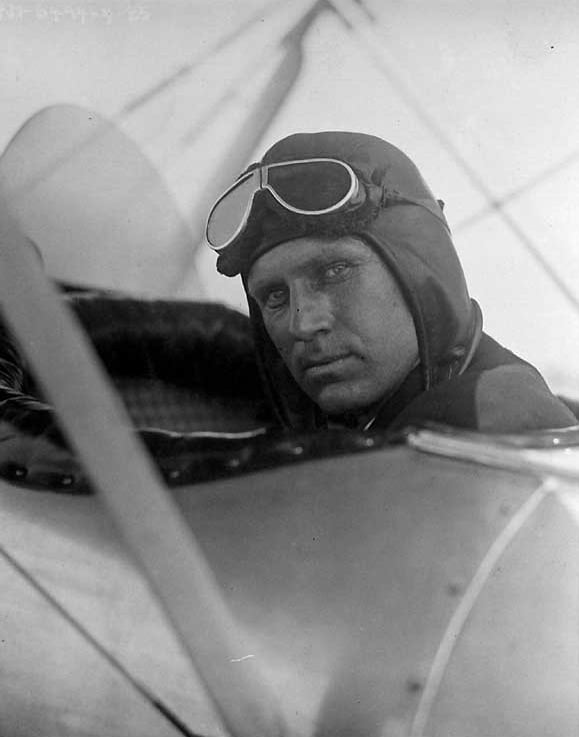
The MacMillan Expedition left Wiscasset, Maine, on June 20, 1925, aboard two small ships. The Navy men and their crated aircraft were aboard Peary, a former Canadian minesweeper, while the bulk of the scientific party was aboard Bowdoin, an auxiliary schooner named for MacMillan’s alma mater that had been used in previous Arctic expeditions.
The departure was late in the season, considering the distance that had to be traveled even before any of the time-consuming scientific work could begin on the way north.
The final destination was the port of Etah, a small settlement on Greenland’s northwest coast, about 700 miles south of the pole. MacMillan had helped to establish it on a 1912 expedition.
After battling through icefields near the end of the voyage, the two ships finally reached Etah on Aug. 1.
While plenty of daylight remained, the chill winds of autumn were beginning to blow harder each day. At last, however, the American airmen could unload and reassemble their planes. Four days later they began the exploratory flights they had anticipated for so long.
The three aircraft, designated NA-1, NA-2 and NA-3, were crewed respectively by Lt. Cmdr. Byrd and pilot Floyd Bennett; Chief Boatswain’s Mate Earl E. Reber, a pilot, and Aviation Machinist’s Mate 1st Class Charles F. Rocheville, mechanic; and Lieutenant M.A. Schur and pilot A.C. Nold. Two other men were also in the detachment: Albert A. Francis, who served as the aerographer, and N.P. Sorenson, a mechanic.
Byrd had planned that two advanced bases would be established for the planes, one at the farthest edge of the large islands to the west, either on Ellesmere Island or Axel Heiberg, and the other at an intermediate location on the way to those sites.
From these locations, with their caches of gasoline and other supplies, flights to the northwest would then be made to the outer limits of the planes’ capabilities.
Initial test flights showed that the planes were tail-heavy when loaded with the planned cargoes for the advanced bases. The problem was partially solved by removing a 33-gallon forward gas tank and stowing the cargo there, but the reduced gasoline capacity affected the range of the aircraft.
These early flights, which went low over nearby ice floes, convinced Byrd that the ice was so rough that his planes could not land on them, even if skis were added to their landing gear.
In view of the ruggedness of the terrain below, the speed with which the weather could change and the unreliability of the compass, every flight became a dangerous mission into which Byrd chose not to order his men, accepting only volunteer participation instead.
As expected, all the men volunteered.
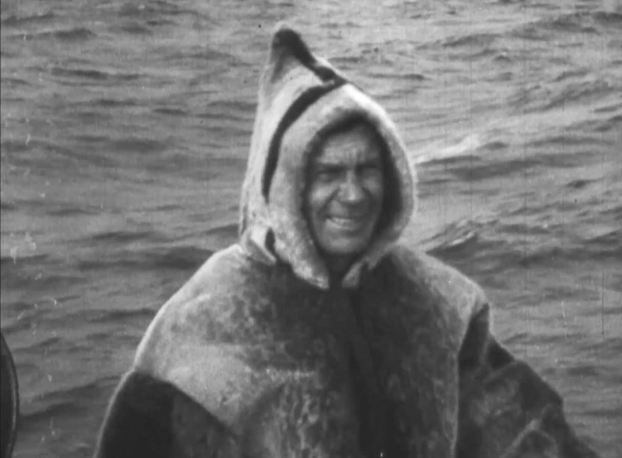
The compass problem was, of course, endemic to Arctic exploration. Magnetic compasses point to the north magnetic pole, a moving phenomenon now generally thought to be at about 77 degrees north and 101 degrees west in the Queen Elizabeth Islands — a location well to the southwest of Ellesmere Island, where the expedition was operating.
Earth inductor compasses were also in use in planes of that era, but those, too, depended upon magnetic fields. Gyro compasses of the type used aboard ships were not suitable for aircraft because of their inability to accommodate frequent changes in course.
Consequently, the only compass with any reliability in high latitudes at that time was the sun compass, based on a sundial-time relationship, but it was useless when the sun did not shine, a frequent occurrence in the Arctic.
On the first extended flight on August 8 Byrd discovered that the error in the magnetic compasses was 113 degrees. Using visual bearings of known points of land, pilots of the three planes were able to work their way westward over some of the rugged fjords of Ellesmere Island before worsening weather forced them to return to Etah.
During the next few days the weather remained foul, but a few flights were carried out. On Aug. 11 the three planes were able to fly together in an attempt to put down a base. However, only one suitable open-water landing location could be found, which was in an area southwest of Axel Heiberg.
After returning to Etah, the planes were refueled and took off again in the evening, the men still hoping to find a landing site. This time they were marginally successful, landing on the water in Hayes Sound, one of the many deep-ocean indentations in Ellesmere Island, but no advanced base was established there.
On Aug.13 there was reason for hope, but that hope soon faded.
“Good weather has at last come,” noted Byrd in his diary.
He went on, however, to record other problems:
“The NA-2 and 3 are out of commission. Bennett and I are going tonight for the blessed old navy. We must make a showing for her. Everything went wrong today. NA-1 lost cowling overboard. NA-2 went down by nose. Almost lost her. NA-3 nearly sunk by icebergs and injured lower wing on raft. Later, MacMillan wouldn’t let me go. He seems to have given up. MacMillan seems to be in great hurry to pack up and go back. Wonder what is in his mind," Byrd wrote.
NA-2 was successfully salvaged and hoisted out of the water. Her engine was replaced with a spare, but she did not fly again during the expedition.
The following day, NA-1 and NA-3 were flown to a fjord on Ellesmere Island where open water had been spotted on the earlier flight. There the pilots were able to bring their planes within 50 feet of the shore, enabling them to wade to the beach carrying a total of 200 pounds of food and 100 gallons of gasoline.
At last an advanced base had been established, and the two crews could return to Etah knowing that longer flights were possible.
The next day, August 15, both planes returned to their new base, only to discover that the ice had closed in around it, making landings impossible.
As they searched unsuccessfully for another landing site, the enlisted pilot Nold in NA-3 became separated from Byrd’s plane. Alone in the plane, the result of a decision to save space for cargo, Nold had become disoriented and flown north. NA-1‘s pilot pursued him, finally overtaking him after an hour and leading him home to Etah, where Nold observed that he had never felt as lonely in his entire life as he had during the time he was flying alone.
On the 16th the two operable planes returned to the air, exploring more of the fjords of Ellesmere Island. NA-3 developed an engine knock that prevented pilot Schur from accompanying Byrd and Bennett across the highest mountains, but he was later able to follow NA-1 back to Etah.
Byrd reported to the secretary of the Navy: “The jaggedness, irregularity, and many deep valleys presented a magnificent but awful spectacle. The air was the roughest ever experienced by us.”
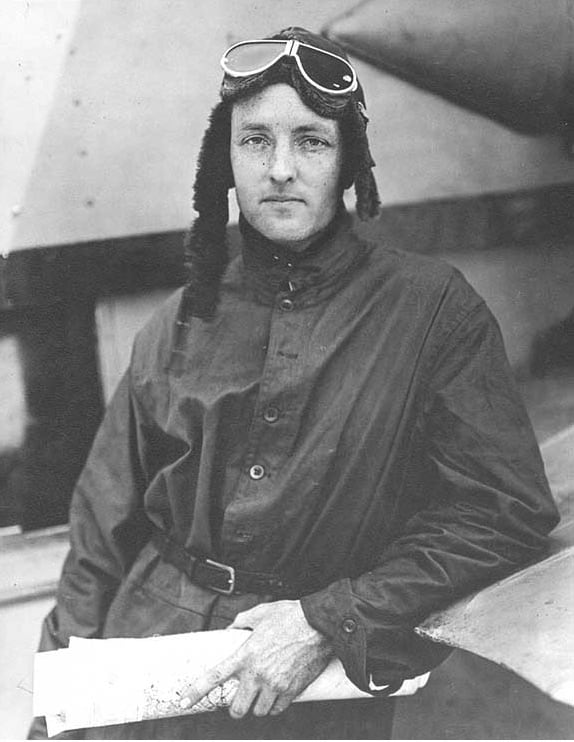
At this point a diplomatic problem arose. The Canadian government’s steamer Arctic arrived at Etah, and the officials on board communicated the concern of their government, which felt its territory was being used by outsiders without permission.
MacMillan insisted that he had obtained such permission.
The diplomatic Byrd was able to defuse this potential unpleasantness more effectively than he was able to handle MacMillan and McDonald.
On the 17th their bad luck continued. Gasoline on the water around Peary caught fire, and NA-3, which was tied to the ship, was cast adrift to prevent a disaster. Although the plane’s wings caught fire, the crew put out the flames with a fire extinguisher — but there was already substantial damage to the fabric. During the next several days the Navy men installed replacement wings and a new engine in the plane.
The fjord at Etah began to freeze over. It was soon clear that only a few more days remained before the expedition would have to head south.
Byrd’s biographer, Edwin P. Hoyt, asserts that Byrd and Bennett wanted to use the remaining time to try to reach the Pole in NA-1, but that the plan was vetoed by MacMillan, who cited the dreary record the planes had achieved thus far.
Published portions of Byrd’s diary, generally more candid than his diplomatically worded reports and magazine articles, do not mention this incident, although the editor of that diary, Raimund E. Goerler, indicates that “Byrd’s goal was to test aircraft in the Arctic and, if possible, make a flight over the North Pole.”
One additional major flight was attempted, however, out over the Greenland icecap. This operation turned into one of the more successful ventures of the expedition, but it, too, was not without problems.
The new engine of NA-3 threw a connecting rod shortly after takeoff from Etah. After a forced landing, NA-3 had to be towed back to Peary, where it was taken aboard and stowed for the trip home alongside NA-2. Byrd and Bennett completed their reconnaissance and then returned to the ship to stow their plane for the voyage home.
On the homeward journey, the two small ships encountered storms and ice. The last vestiges of summer had vanished from the high latitudes.
Along the way, Peary was called upon to rescue the crew of a sinking Danish naval vessel and to pull Bowdoin free after the schooner had run aground.
These delays added to the frustration of Byrd and his men, who were forced to endure MacMillan’s continual disparagement of heavier-than-air aviation in his public pronouncements.
During the journey the airmen heard news of two other Navy flights that had experienced difficulty — the crash of the dirigible Shenandoah in Ohio with the loss of 14 lives, and the forced landing of the Hawaii-bound flying boat PN-9, built by the Naval Aircraft Factory, whose crew had been forced to sail the ungainly aircraft hundreds of miles to reach their destination after the plane had run out of gas.
Billy Mitchell, the critic of naval aviation, was having a field day.
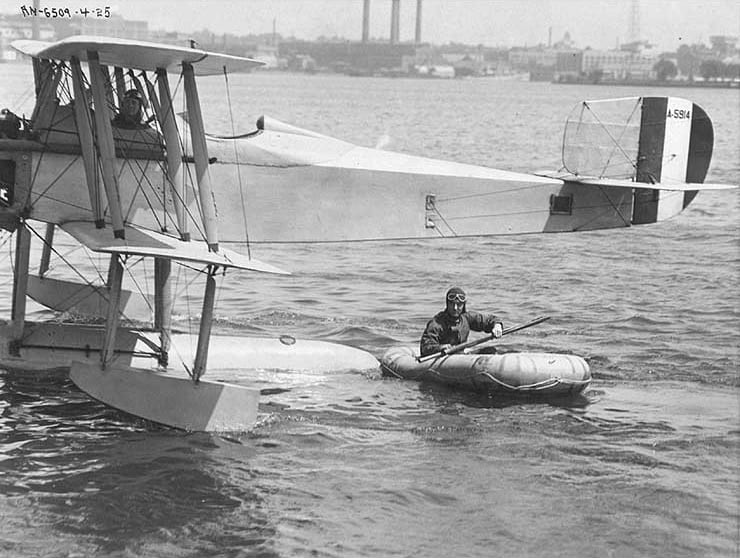
The public, however, was never allowed to regard the 1925 Arctic expedition as a failure.
In the pages of its magazine, the National Geographic Society made much of the venture’s scientific accomplishments. Byrd, always the optimist as well as the diplomat, had good things to say about MacMillan and his leadership of the expedition, and nothing but praise for the Loening aircraft and the future of Arctic flying.
When the expedition reached the States in the fall of 1925, the scientists and the Navy men went their separate ways, with no plans to work together again.
While the mishaps of the MacMillan Arctic Expedition were fresh in their minds, Byrd and Bennett began to think ahead to the next Arctic summer and the possibility of reaching the pole.
In retrospect, the aviation operations of the expedition proved beneficial in the long run in that they taught the Navy and future Arctic fliers, particularly Byrd and Bennett, several important lessons.
One was that the advanced base concept was not feasible for polar flying; flights to the North Pole had to be just that, from their inception to conclusion, and not the cumulative results of several short flights made from advanced aviation bases by planes that worked their way step by step like the dog teams of the past.
Byrd and Bennett would use this lesson the following summer, when they went on to fly a ski-equipped Fokker trimotor from Spitzbergen directly to the pole and back.
As to Byrd’s claim of having flown over the pole in 1926, for many years the unavailability of his navigation charts and the condition of his disorganized and sometimes erased log entries for that flight have bothered experts.
In addition, the speed apparently made by the Fokker aircraft seemed unrealistic.
Reaching the pole required a round trip of at least 1,330 nautical miles; the fliers were gone 15,172 hours in fairly calm air. This would mean that the plane flew at about 86 knots.
Yet the same plane, in her triumphant round-the-country flight in 1927, averaged only 72 knots, even after all the engines had been overhauled. In 1927 another Fokker with more powerful engines averaged 81 knots with a tailwind on a flight to Hawaii. Thus, doubts have long existed about Byrd’s ability to have reached the pole in the time he was aloft.
Bernt Balchen, who later flew with Byrd on transatlantic and South Polar flights, joined Floyd Bennett on the round-the-country tour of the Fokker and led Bennett through the arithmetic of the speed and distance relationships of the North Pole flight. When Balchen suggested that the plane must have turned around short of the pole, Bennett did not disagree, shrugging it off with the reply, ‘Well, it doesn’t matter now.’
But it did matter; the Byrd family forced the publisher who had printed Balchen’s book containing that conversation to sanitize the passage in a subsequent edition. The issue of the North Pole flight remained unresolved, and it eventually resulted in an irreparable rift between Byrd and Balchen.
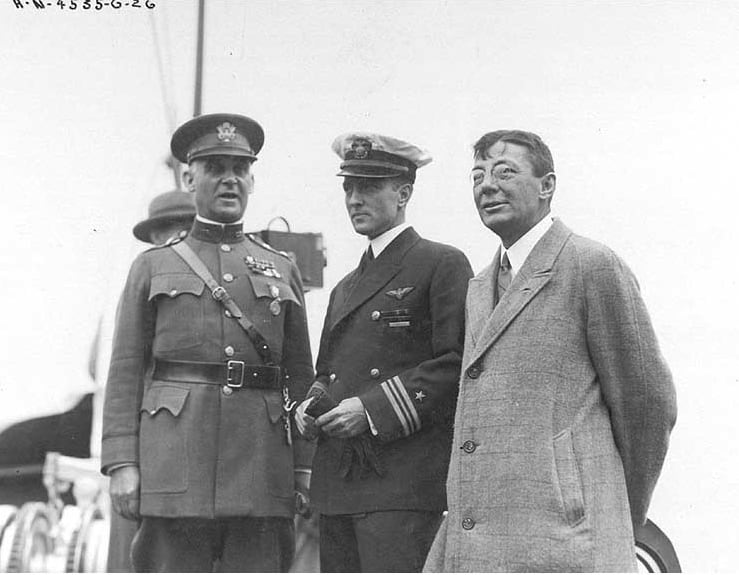
Another lesson of the 1925 flights was that multi-engine aircraft were a necessity for Arctic work, and that conventional amphibian aircraft with wheels were useless.
It is impossible to say whether another amphibian model would have done any better on the expedition than the Loenings. Loening aircraft went on to have a good record with the U.S. Navy (which used them for aerial surveying in Alaska and Latin America), the U.S. Coast Guard, the U.S. Marine Corps and particularly the U.S. Army, which employed several of the amphibians in a long and successful flight to the southern tip of South America the following year.
Finally, it should have been clear that split command relationships created insurmountable problems on the expedition.
A military operation that depended on support ships of a philanthropic agency for transport, decisions by a civilian director for permission to fly and a private donor for access to radio transmissions ceases to be a military operation.
It is virtually a miracle that the expedition did not disintegrate into a messy public quarrel between Byrd and his rivals MacMillan and McDonald that could have hurt the future of Arctic aviation.
That future still seemed promising in 1925. Perhaps one could even conclude that the failures of the 1925 Arctic expedition in concept, equipment and leadership helped assure trouble-free flying for Byrd and Bennett in 1926, regardless of whether their flight actually reached the exact coordinates of the North Pole.
RELATED
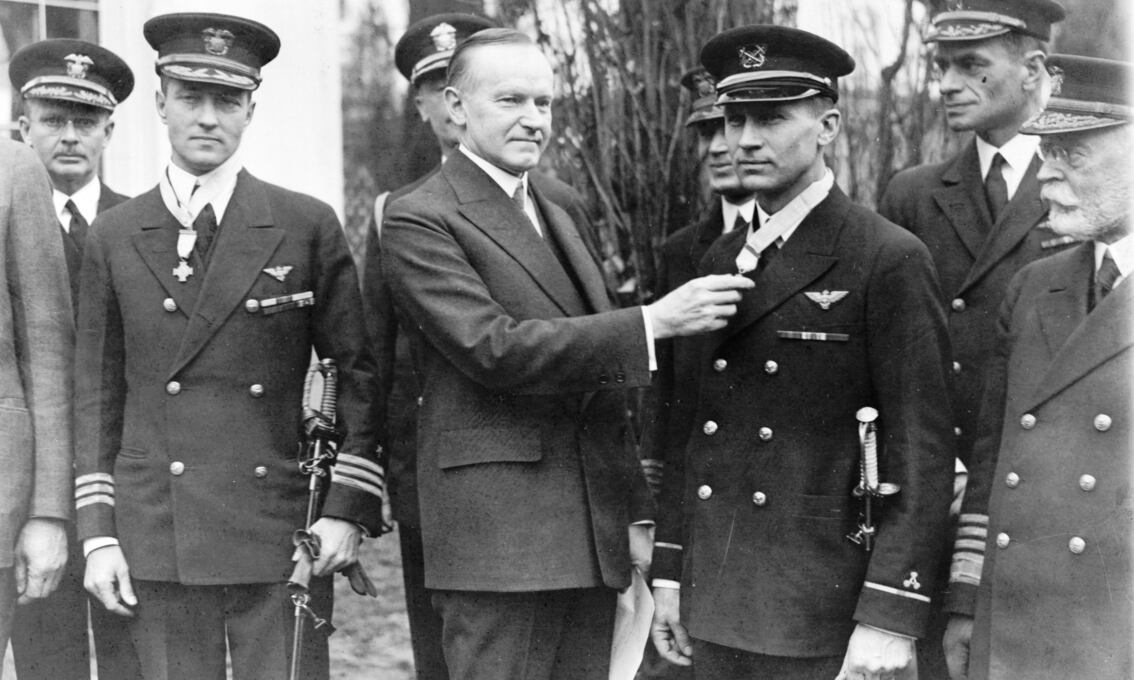
This article originally appeared in the March 2001 issue of Aviation History, a sister publication of Navy Times. For more great articles subscribe to Aviation History magazine today!

